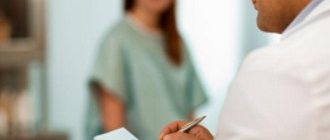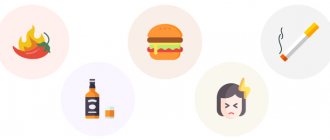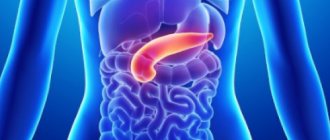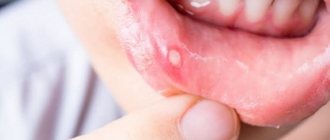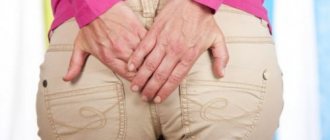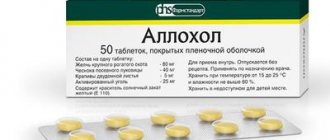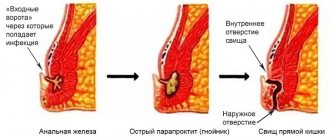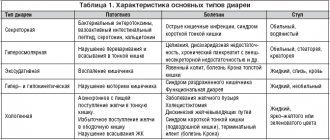Chronic cholecystitis, what is it? Symptoms and treatment
In the practice of gastroenterologists, patient complaints regarding inflammation of the gallbladder (or cholecystitis) occupy an important place. The disease is differentiated into two large groups, determined by the presence (absence) of stones - calculous and non-calculous forms. Each type is characterized by a chronic course with periodic exacerbations.
Chronic acalculous cholecystitis occurs approximately 2.5 times less frequently than the calculous form, accompanied by the deposition of stones in the bladder. This disease affects 0.6%-0.7% of the population, mainly middle-aged and older. Let's look at what acalculous cholecystitis is, the symptoms and treatment of this disease.
What is the danger of pathology?
A low-grade inflammatory process affects the gallbladder. Pathology during periods of remission does not particularly annoy the patient; the person often does not realize that the digestive organs are in serious danger.
Despite rare attacks, damage to the gallbladder is quite serious:
- the outflow of bile is disrupted, the biochemical composition of the fluid changes;
- cells cope poorly with the load, food digestion occurs more slowly than expected;
- a sluggish inflammatory process causes degeneration of the walls of the gallbladder and inhibits immune mechanisms;
- improper operation of an element of the digestive system worsens the general condition of the patient.
In the absence of competent therapy or untimely seeking medical help, damage to the inflamed walls of the gallbladder is so severe that the problem organ has to be removed.
Spa treatment and balneotherapy
Sanatorium treatment is an important stage in the recovery of patients with diseases of the digestive system.
The effect of treatment outside the acute stage at a resort is higher than in a hospital. Natural healing factors (climate therapy, mineral waters, baths, mud therapy, therapeutic nutrition and physical exercise) have a beneficial effect on the functional state of the nervous system and bile secretion mechanisms, help restore immunity, normalize metabolism, and have an anti-inflammatory effect.
Balneotherapy - treatment with mineral waters - is a proven and effective method that corrects disorders of the digestive system.
When prescribing mineral waters, the state of the secretory function of the stomach must be taken into account. Bottled mineral waters are also successfully used - Essentuki, Slavyanovskaya, Smirnovskaya, Nagutskaya, Stelmas, Psyzh and others.
Essentuki. Photo: market.yandex.ru
Rinse the cup with hot water, then pour 1/3 glass of mineral water and slowly take it warm 25-40 minutes before meals.
On the recommendation of a gastroenterologist, tubage can be performed with mineral water with the addition of 20–25 g of xylitol or 1/2 teaspoon of Carlsbad salt. Mineral water is drunk in courses of 15-30 days.
show more
Causes and risk factors
Factors that predispose to the appearance of a chronic form of cholecystitis include the following:
- bile stagnation;
- prolapse of internal organs;
- pregnancy;
- disruption of the blood supply to the organ;
- entry into the bile ducts of pancreatic juice;
- being overweight;
- excessive fatigue;
- the presence of intestinal infections in the body;
- chronic form of pancreatitis;
- insufficiently active lifestyle;
- excessive consumption of alcoholic beverages;
- eating disorders;
- foci of infection in the body;
- eating a lot of spicy and fatty foods;
- hypoacid gastritis;
- hypothermia;
- Stressful situations, endocrine disorders, autonomic disorders can lead to problems with the tone of the gallbladder.
The causative agents of cholecystitis, as a rule, are pathogenic microorganisms - staphylococci, streptococci, helminths, fungi. They can enter the gallbladder from the intestines, as well as through the blood or lymph.
Forecast
Prognosis for curing the disease largely depends on how it progresses.
Thus, an uncomplicated course of cholecystitis, as a rule, has a favorable prognosis. Complicated forms of the disease, as well as the presence of severe concomitant diseases, lead to a significant deterioration in the prognosis for cure - the mortality rate of patients with these pathologies is 50-60%.
This is explained by the fact that complicated forms of the disease are accompanied by the rapid development of empyema and gangrene of the organ, liver abscesses, fistulas, and peritonitis.
Classification
The disease is characterized by a chronic course and a tendency to alternate exacerbations and remissions. Taking into account their number throughout the year, experts determine the nature of the disease: mild, moderate or severe.
There are 2 main types of chronic cholecystitis:
- non-calculous (stone-free) – (inflammation of the walls of the gallbladder without the formation of stones);
- calculous (with the formation of hard concretions - stones).
Depending on the course of the disease, there are 3 forms of the disease - sluggish, recurrent and purulent.
Symptoms
The main symptom of chronic cholecystitis is a dull pain in the right hypochondrium, which can last for several weeks, it can radiate to the right shoulder, and the right lumbar region, and be aching. Increased pain occurs after consuming fatty, spicy foods, carbonated drinks or alcohol, hypothermia or stress; in women, an exacerbation may be associated with PMS (premenstrual syndrome).
The main symptoms of chronic cholecystitis:
- Bitterness in the mouth, bitter belching;
- Heaviness in the right hypochondrium;
- Low-grade fever;
- Possible yellowing of the skin;
- Indigestion, vomiting, nausea, lack of appetite;
- Dull pain on the right under the ribs, radiating to the back, shoulder blade;
- Very rarely, atypical symptoms of the disease occur, such as heart pain, difficulty swallowing, bloating, constipation.
Chronic cholecystitis does not occur suddenly, it develops over a long period of time, and after exacerbations, against the background of treatment and diet, periods of remission occur; the more carefully you follow the diet and supportive therapy, the longer the period of absence of symptoms.
Diagnostics
In a conversation with the patient and when studying the medical history, the doctor draws attention to the reasons that could lead to the development of chronic cholecystitis - pancreatitis and other pathologies. When palpating the right side under the ribs, painful sensations occur.
Instrumental and hardware methods for diagnosing chronic cholecystitis:
- Ultrasound;
- cholegraphy;
- scintigraphy;
- duodenal intubation;
- arteriography;
- cholecystography.
Laboratory tests reveal:
- In the bile, if there are no stones, there is a low level of bile acids and an increase in the content of lithocholic acid, cholesterol crystals, an increase in bilirubin, protein and free amino acids. Bacteria that cause inflammation are also found in the bile.
- In the blood - increased erythrocyte sedimentation rate, high activity of liver enzymes - alkaline phosphatase, GGTP, ALT and AST/
Medicines
Conservative treatment involves the use of broad-spectrum antibiotics (Norfloxacin, Cephalexin, Spiramycin) and intravenous administration of antispasmodics (No-Shpa, Papaverine, Spazmalgon).
To support digestive function, enzyme-containing supplements are used: Pancreatin, Mezim, Festal.
To support liver function, hepatoprotectors are indicated: Gepabene, Chofitol.
Doctors also recommend choleretic agents of natural origin Allochol, Cholenzym and sorbents Activated carbon, Atoxil, etc.
Treatment of chronic cholecystitis
Treatment tactics for chronic cholecystitis vary depending on the phase of the process. Outside of exacerbations, the main treatment and preventive measure is diet.
During the period of exacerbation, the treatment of chronic cholecystitis is similar to the treatment of the acute process:
- Antibacterial drugs for the sanitation of inflammation;
- Enzyme products - Panzinorm, Mezim, Creon - to normalize digestion;
- NSAIDs and antispasmodics to eliminate pain and relieve inflammation;
- Drugs that enhance the outflow of bile (choleretics) – Liobil, Allohol, Holosas, corn silk;
- Droppers with sodium chloride, glucose to detoxify the body.
In the presence of stones, litholysis (pharmacological or instrumental destruction of stones) is recommended. Medicinal dissolution of gallstones is carried out using drugs deoxycholic and ursodeoxycholic acids, instrumentally - extracorporeal shock wave methods, laser or electrohydraulic effects.
In the presence of multiple stones, persistent recurrent course with intense biliary colic, large size of stones, inflammatory degeneration of the gallbladder and ducts, surgical cholecystectomy (cavitary or endoscopic) is indicated.
What not to eat: prohibited foods
What to eat for cholecystitis is the main question for people who have been diagnosed with gallbladder problems. It is recommended to exclude from the diet for this disease:
| WHAT IS EXCLUDED | WHY EXCLUDE |
| Any smoked meats (industrial and home production) | They have a choleretic effect, which can lead to exacerbation of existing chronic cholecystitis. |
| Fried foods, and the ban applies to both meat and vegetable dishes. Deep frying is also not allowed, including for preparing dessert dishes. | Excessively activate enzyme systems, have an excessive choleretic effect |
| Spicy foods, most spices and herbs, products with essential oils (citrus fruits, garlic), horseradish, radish, onions (without heat treatment). | Spices and herbs have a stimulating effect on the digestive tract, which can provoke impaired motility of the biliary system and an imbalance between the secretion and consumption of bile. |
| Fatty food. For cholecystitis, it is recommended to exclude fatty meats (pork, lamb, lean beef, goose, duck), interior fat, lard, cholesterol-rich offal (brains, liver, kidneys). Cottage cheese above 5% fat content, cream, fatty dairy and fermented milk products, ice cream (cream and ice cream), mayonnaise, margarine, avocado, confectionery butter cream, nuts, kozinaki, halva are removed from the diet. Oils (butter, vegetable) and yolks are used in limited quantities. Cheeses are limited, with preference given to low-fat varieties. | Complete digestion of fats is possible only with the help of bile, which has an emulsifying effect and thereby helps pancreatic enzymes act more actively. Therefore, all fatty foods have a choleretic effect, and their consumption is fraught with exacerbation of cholecystitis. Excess animal fats in the diet also increases the likelihood of cholesterol stones forming in the lumen of the gallbladder. But fats cannot be completely excluded from the diet, because they are alternative energy and are necessary for the body to build cell walls and synthesize hormones and enzymes. |
| Extractive dishes (fatty, strong meat and fish broths in the first water, concentrated cabbage broth). | They irritate the mucous membrane of the digestive tract and provoke excessive secretion of prokinins - biologically active substances that activate the motility of the gallbladder and intestines. Therefore, consumption of strong broths is fraught with the development of spasm of the neck of the gallbladder and an imbalance in the functioning of the biliary tract. |
| Fresh white bread, baked goods based on premium wheat flour, especially from butter, cake and shortbread dough. | They adversely affect the functioning of the intestines and overstimulate the activity of the pancreas, which secondarily disrupts the functioning of the gallbladder. And some types of dough contain an increased amount of fat, which provokes increased bile formation. |
| Products with a large amount of oxalic acid: spinach, sorrel, rhubarb, leaf mustard, sorrel, meingold, strawberries. | May provoke the formation of oxalate stones. |
| Canned and pickled foods. | Overstimulates the digestive system. |
| Mushrooms (in any form and any varieties) | Difficult to digest, excessively stimulate bile formation. |
| Any foods that contribute to increased gas formation in the large intestine. These include: fresh white cabbage, legumes, turnips. | In most people, they provoke increased fermentation and putrefactive processes in the lumen of the large intestine, which is accompanied by flatulence. |
| Chocolate, concentrated cocoa, strong coffee, strong tea, carbonated drinks | They have a stimulating effect. |
| Alcohol | Stimulates the gallbladder and at the same time increases the likelihood of biliary tract development (imbalance in the motility of different departments). |
If you have any doubts about whether you can eat certain foods if you have cholecystitis, consult your doctor or nutritionist.
Diet for chronic cholecystitis
In case of illness, it is necessary to strictly adhere to table No. 5 even during the period of remission for prevention. Basic principles of diet for chronic cholecystitis:
You cannot eat during the first three days of an exacerbation. It is recommended to drink rosehip decoction, still mineral water, sweet weak tea with lemon. Gradually, puree soups, porridges, bran, jelly, lean meat, steamed or boiled, fish, and cottage cheese are introduced into the menu.
Then you need to follow these recommendations:
- You need to eat small portions at least 4-5 times a day.
- Preference should be given to vegetable fats.
- Drink more kefir and milk.
- Be sure to eat a lot of vegetables and fruits.
- What can you eat if you have chronic cholecystitis? Boiled, baked, steamed, but not fried dishes are suitable.
- For the acalculous form of chronic disease, you can eat 1 egg per day. In case of calculosis, this product should be completely excluded.
The use of:
- alcohol;
- fatty foods;
- radish;
- garlic;
- Luke;
- turnips;
- spices, especially hot ones;
- canned food;
- legumes;
- fried foods;
- smoked meats;
- mushrooms;
- strong coffee, tea;
- butter dough.
Neglect of nutritional principles can cause serious consequences of chronic cholecystitis, leading to relapse of the disease and progression of inflammatory-destructive changes in the walls of the gallbladder.
When the gallbladder is inflamed. We talk about cholecystitis
Modern medicine has to deal with pathology of the biliary tract quite often. And the number of such diseases continues to grow. Today we will talk about cholecystitis: what kind of disease it is, what are its symptoms, the causes of its appearance, how it is detected and treated.
Nikolai Borisovich Patrushev, a gastroenterologist at Clinic Expert, Perm, answers our questions.
— Nikolai Borisovich, there is evidence that today 10-20% of the adult population suffers from cholecystitis, and there is a tendency for this pathology to further increase. Please tell us what it is?
— In one sentence, cholecystitis is an inflammation of the gallbladder. Pathology of the biliary tract remains a pressing problem for today's medicine. Yes, there is a tendency towards an increase in incidence. Moreover: according to scientists, the number of diseases of the digestive system (which includes pathology of the biliary tract) will increase by 30-50% in the world in the next 15-20 years.
— What types of cholecystitis are known to modern medicine?
— There are two of them: acute and chronic cholecystitis. The first develops quickly, against the background of complete well-being. Abdominal pain appears, the pain is localized in the right hypochondrium. Nausea and vomiting may occur, and the temperature may rise. As a rule, acute cholecystitis is most often a manifestation of cholelithiasis. Such patients are hospitalized by ambulance in a surgical hospital.
Read more about gallstone disease here: Remove or leave? What to do if gallstones are found?
Chronic cholecystitis initially develops as an independent process, gradually and imperceptibly. Often, a patient is diagnosed with cholecystitis during an examination for completely different diseases. It should also be taken into account that diseases of the gallbladder and biliary tract are characterized by a variety of clinical manifestations, duration of course, and prolonged exacerbations - this causes frequent seeking of medical help, making these ailments a social problem.
- What are the causes of cholecystitis? What causes it?
— Various factors are involved in the development of this pathology. In first place I would put a violation of the contractile function of the gallbladder. This leads to stagnation of bile, slowing down its evacuation from the gallbladder. Most often, the contractile function of the gallbladder is affected by psycho-emotional overload, neurotic reactions and prolonged stressful situations, physical inactivity.
The infectious factor also matters. Infectious agents penetrate the gallbladder from chronic foci of inflammation in the body - for example, in diseases of the ENT organs, stomach, duodenum, and from other parts of the intestinal tube.
Helminthic infestations, such as opisthorchiasis, also contribute to the development of cholecystitis. Previous hepatitis A (Botkin's disease) can also lead to inflammation of the gallbladder.
This disease can also be provoked by the reflux of pancreatic juice into the cavity of the gallbladder - a so-called chemical burn of the gallbladder mucosa occurs, which can lead to its inflammation.
Read materials on the topic:
How to protect yourself from Botkin's disease? Is there a stress vaccine? Childhood is for movement! What does physical inactivity lead to?
— Please tell us about the signs of cholecystitis. How does it manifest itself?
— Cholecystitis can occur with varying degrees of severity. The symptoms will depend on this, as well as on the stage of the disease. First of all, the pathology manifests itself as pain. These pains occur due to spasm of the gallbladder or due to its stretching.
Pain appears in the right hypochondrium, usually 40 minutes - 1.5 hours after an error in diet (for example, when eating spicy, fatty foods, fried foods, overeating). The pain is felt for about half an hour and, in mild cases, goes away on its own. In severe forms, the pain is more intense and prolonged.
Pain can also be provoked by a person spending a long time in a sitting position - driving a car, at a computer. From the right hypochondrium, such pain can radiate upward - to the right shoulder, neck, right shoulder blade.
In addition to pain, the patient may be bothered by so-called dyspeptic disorders: belching, nausea, metallic taste in the mouth, sometimes vomiting (if it occurs repeatedly, bile may appear in it). Abdominal bloating and alternating constipation and diarrhea may occur.
Also, cholecystitis may be accompanied by irritability, insomnia, and decreased performance.
The more severe the form of cholecystitis, the brighter and longer the listed symptoms will be expressed.
— Is there asymptomatic cholecystitis? That is, nothing bothers the person, and the disease is detected only when conducting any diagnostic studies - for example, as part of a preventive examination
- Yes, this happens. In 50% of cases, cholecystitis occurs latently and asymptomatically. Signs of gallbladder pathology before clinical manifestations of the disease can only be indicated by ultrasound data. Therefore, this study must be included in the screening program for diseases of the digestive system.
In addition, there are atypical clinical forms that can mislead the doctor, simulating various diseases of other organs and systems, for example, cardiovascular, endocrine and others (so-called “masks”). And when we start to understand, it turns out that we are talking about the pathology of the gallbladder. The most well-known and studied is the so-called cardiac mask of cholecystitis (or cholecystocardiac syndrome): every third or second patient with cholecystitis may complain of heart problems. These are rapid heartbeat, shortness of breath, pain in the heart area. The electrocardiogram in such patients is without any abnormalities.
Cholecystitis can also occur under the guise of thyroid pathology - here the patient’s complaints will be similar to thyrotoxicosis (irritability, excessive sweating, the same rapid heartbeat, trembling of the fingers, increased body temperature to 37-37.5 degrees). In this case, the thyroid gland may turn out to be somewhat enlarged, and here it is necessary to figure out whether the symptoms are caused by its pathology, or whether the problem is still in the gallbladder.
Cholecystitis may also have an allergic mask, and a number of others. To understand this, the doctor must have considerable practical experience and correctly build a diagnostic search.
- Let's talk about diagnosing cholecystitis. What does it include? How can a doctor detect this pathology?
— Today, the most accessible and common method for diagnosing cholecystitis is ultrasound of the abdominal cavity. Ultrasound diagnostics allows you to assess the condition of the walls of the gallbladder: if they are thickened by more than 4 mm, this is already a clear sign of cholecystitis, if less, perhaps the pathology is only at the beginning of development. The doctor also evaluates the contractility of the gallbladder.
An ultrasound will also help identify gallstones. If they are detected and cholecystitis is also present, then they speak of stone (calculous) cholecystitis.
You can sign up for an abdominal ultrasound here. ATTENTION: the service is not available in all cities
There are other research methods. For example, probing of the duodenum (duodenal intubation). It allows you to evaluate the biochemical composition of bile, test it for infection and identify microbes that cause inflammation in the gallbladder.
— How can doctors help a patient with this disease? How is cholecystitis treated?
“We can only help after, during a full examination, we find out as fully as possible all the reasons that led to the appearance of cholecystitis in the patient. The treatment program is structured as follows. In the first place is therapeutic nutrition. First of all, this is a fractional meal, five to six times a day. The gallbladder “loves” that we take food at the same hours: by doing this we train it and prevent stagnation of bile in it. It is important that the food is not hot or cold, but warm.
The selection of medications is carried out taking into account the function of the gallbladder, in particular its contractility. If the function is increased, if there are sharp spastic pains, antispasmodic drugs are recommended. When, during normal contractile function of the organ, we find signs of viscous, stagnant bile, drugs with a choleretic effect are used.
If studies show poor contractility of the bladder, then the treatment program includes drugs that stimulate its function and help it work correctly.
In certain cases, antiparasitic, antibacterial, and anti-inflammatory drugs are used. The doctor decides all this, depending on the results of the study.
Let's not forget about other methods of treating cholecystitis - the same sanatorium-resort treatment. Chronic patients need to go to resorts for at least three or four years in a row - as they used to say, “to the waters.” It is very useful. But you need to go there with all medical documents, then the patient will be given the right diet and water intake (type, quantity and temperature).
— What can you eat with cholecystitis and what can’t you eat?
— Proteins, fats and carbohydrates should be exactly as much as necessary for the normal functioning of the body. The diet should include lean meats (beef, rabbit), fish (preferably boiled or steamed), low-fat cottage cheese, and wheat bran. Among cereals, preference is given to oatmeal and buckwheat.
Let's not forget about fresh vegetables and fruits (it's better to have melon, pumpkin, watermelon, carrots, apples).
Fatty, fried foods, smoked foods, marinades, pickles, and alcoholic drinks, including beer, are excluded. This list also includes carbonated drinks, hot seasonings and egg yolks (the latter for periods of exacerbation).
Fasting days (1-3 per week) will not hurt: these can be rice-compote, cottage cheese, watermelon days. In addition, drinking plenty of fluids is recommended.
— How to prevent the development of cholecystitis? Please tell us about prevention
— Probably, much is clear already from the above. Basic prevention differs little from the prevention of many other diseases. This is a healthy lifestyle, rational nutrition - we eat often, not on the run, we chew food thoroughly, slowly.
Agree, seemingly simple, truisms. But, believe me, first of all, they are important in terms of preventing cholecystitis.
Interviewed by Igor Chichinov
If you need a consultation with a gastroenterologist, you can make an appointment here. ATTENTION: the service is not available in all cities
The editors recommend:
Biliary dyskinesia: what is hidden behind this diagnosis? Why do people turn yellow? MRI of the liver: pros and cons
For reference:
Patrushev Nikolay Borisovich
Gastroenterologist, Candidate of Medical Sciences Graduate of the Perm State Institute in 1988. Primary specialization in gastroenterology - 1995. From 2005 to 2014. worked at the Central Research Institute of Gastroenterology (Moscow). First - a doctor in the department of chronic liver diseases, then the head of the consultative and diagnostic department of the institute. Since 2022 – gastroenterologist at “Clinic Expert” Perm. Receives at the address: Perm, st. Monastyrskaya, 42a.
Complications of chronic cholecystitis
Timely treatment of chronic cholecystitis allows you to maintain quality of life and avoid such serious complications as:
- internal biliary fistulas;
- acute form of pancreatitis;
- hepatitis;
- cholangitis;
- peritonitis - extensive inflammation of the peritoneum, which can occur as a result of perforation of the gallbladder and bile ducts;
- purulent abscesses in the abdominal cavity, including those localized on the liver.
Rehabilitation for chronic cholecystitis after treatment requires timely administration of medications, a gentle daily routine and strict adherence to a dietary diet. If you follow all the specialist’s recommendations, you don’t have to worry about possible complications or subsequent relapses of the disease.
Danger of disease
There are calculous and non-calculous cholecystitis. The first form is a complication of cholelithiasis (GSD). The cause of the pathology is stones. The formations may not bother a person for a long time, but at any moment the stones begin to migrate to the area of the head of the gallbladder and into the ducts. Damage to the mucous membrane, impaired outflow of bile, increased pressure in the organ lead to the development of an inflammatory process. Gallstone disease and calculous cholecystitis are more common in women. Reasons include hormonal imbalances, taking oral contraceptives, pregnancy, and emotionality. Obesity, rapid weight loss, strict diets and fasting also contribute to the development of cholelithiasis and impaired bladder motility. The physiological cause of the development of cholelithiasis is a change in the composition of bile, impaired motility of the gallbladder and duct sphincters. The acalculous form of cholecystitis is more dangerous and more often develops into complications. The causes of cholecystitis can be associated with trauma, burns, childbirth, surgery, and infection. Patients on parenteral (artificial) nutrition and people practicing fasting are at risk. Non-calculous cholecystitis is more common in men and is infectious in nature. The disease is more dangerous than the inflammation associated with cholelithiasis. Acalculous cholecystitis is more difficult to diagnose, quickly develops into complications and has a high mortality rate.
| Form of inflammation | Characteristic sign |
| Catarrhal | Inflammation of the mucous membrane of an organ |
| Phlegmonous | Purulent inflammation |
| Gangrenous | Death of gall tissue |
| Emphysematous | Inflammation with gas formation |
Catarrhal is the least dangerous. In other cases, there is a high risk of perforation of the bladder with the outflow of inflamed fluid into the abdominal area. The main diagnostic methods are ultrasound, blood tests, and gastroscopy to exclude peptic ulcers. Based on the results of an ultrasound examination, stones are identified. Cholecystitis is indicated by uneven thickening of the walls of an organ, the presence of liquid or gases, enlargement of the organ or its shrinkage. Cholecystitis can be acute and chronic. The first form is characterized by a clear manifestation of signs of inflammation: severe pain in the right hypochondrium, temperature up to 38.5, nausea and vomiting.
Chronic cholecystitis often occurs after acute cholecystitis and is characterized by moderate symptoms. A person may complain of heaviness in the right side, digestive problems, and intolerance to fatty foods. Erased symptoms of even acute inflammation are typical for older people and patients with diabetes. The mild course of the disease is deceptive. In the long term, the disease can cause cancer. Treatment of cholecystitis at home without medical supervision is fraught with life-threatening complications. One of the popular methods of self-medication is cleansing the liver when heaviness in the side appears. People use choleretic drugs and vegetable oil. However, in case of chronic calculous cholecystitis, such a measure will increase the risk of complications. At the first signs of cholecystitis, you must undergo an ultrasound and agree on a treatment regimen with your doctor.
Prevention of exacerbations
To prevent the occurrence of the disease or avoid its exacerbation, general hygiene rules should be followed. Nutrition plays an important role. You need to eat food 3-4 times a day at approximately the same time. Dinner should be light and you should not overeat. Excessive consumption of fatty foods in combination with alcohol should be especially avoided. It is important that the body receives a sufficient amount of fluid (at least 1.5-2 liters per day).
In order to prevent chronic cholecystitis, it is necessary to allocate time for physical activity. This could be exercise, walking, swimming, cycling. In the presence of chronic foci of infection (inflammation of the appendages in women, chronic enteritis, colitis, tonsillitis), they should be treated in a timely manner, the same applies to helminthiasis.
If you follow the above measures, you can prevent not only inflammation of the gallbladder, but also many other diseases.
Prevention of disease in women
Preventive measures for cholecystitis:
- healthy lifestyle with proper nutrition;
- giving up alcohol and other addictions;
- moderate physical activity.
To avoid relapses, you should eat smaller meals, move more, avoid stress and avoid overcooling. Patients registered with a gastroenterologist must be examined by their attending physician at least twice a year.
